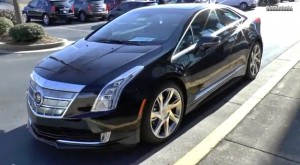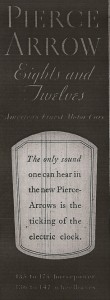
Damn.
She could have been the perfect choice to front a Paris fashion house ad campaign.
She would have been just right as the icon of a special clothing line.
But she was from another time, born in 1775 and died in 1817.
That’s the novelist Jane Austen.
She had something that went deeper than beauty or chic. A brilliant mind.
She would have added wit, insight, perception and shrewdness to the flighty world of fashion.
Jane Austen was a woman of substance, a personality counter to the image of willowy teens in six-inch heels parading down runways to Hip-Hop.
She would have appealed to an older, sophisticated target audience.
The author of Pride and Prejudice is nothing if not a model for independence of mind, judgment and intelligence for women. Or, for that matter, anyone.
As you no doubt know, her books are read today with enduring appreciation.
Put that down to the fact that her insight into human nature is timeless.
Move along 100 years or so and you have another who could have been the face of a Paris fashion house.
The novelist Virginia Woolf.
Again, hers was another time, 1882-1941.
With an incisive mind, an unrelenting power of observation, dry humor and narrative ability she would have embodied independence, intelligence, imagination, and creativity as the iconic image of a fashion house.
Books like To the Lighthouse, A Room of One’s Own and The Waves support that.
But all this aside, wouldn’t it be folly to get a novelist to become the image of a fashion house?
It’s never been done before so it could never happen, right?
But as it did happen a few days ago in Paris, you have to give full marks to the creative director of the upmarket French fashion house, Céline.
She’s called Phoebe Philo.
She went off script in a big way to choose the novelist Joan Didion as the face of the brand.
The author of The White Album and The Year of Magical Thinking has Jane Austen and Virginia Woolf qualities.
Intelligence and perceptiveness being chief among them.
No doubt that made Phoebe Philo rethink what women of a certain age truly value.
Here’s betting she looked hard at the youth-oriented nature of fashion and the Céline line from a telling angle. Her customers’ viewpoint.
We’re talking about affluent women here, women in their fifties.
Then she acted by consigning the marketing rulebook to the dustbin and going with a surprising choice.
The Céline target market must be delighted with the Joan Didion image.
Well-off, middle age women suddenly have an edginess, a cool all their own; they gain when it comes to a new image of chic.
But to up the stakes even more you have Joan Didion’s age.
She’s 80.
Others like Dolce & Gabbana have used older models, but without the one thing that sets Céline apart. Brain power.
All this allows Phoebe Philo to add something new to her resume. ‘Rule breaker in the extreme.’
Let’s hope she sells a zillion.
Meanwhile, there’s so much lip service paid to ideas like ‘when other marketers zig, you zag, when they shout, you whisper’.
How many actually adopt this approach?
On the subject of differentiating your brand, a Jane Austen quote leaves you with a thought Phoebe Philo knows well:
One man’s style must not be the rule of another’s.
Share with us. What does it take to think in a different way? Can it be learned? Which marketing companies have it? Which don’t? Leave your comment below. Thanks for reading Whybetonto.com. Regards, Steve Ulin LinkedIn: http://linkd.in/1Bey3Jl












